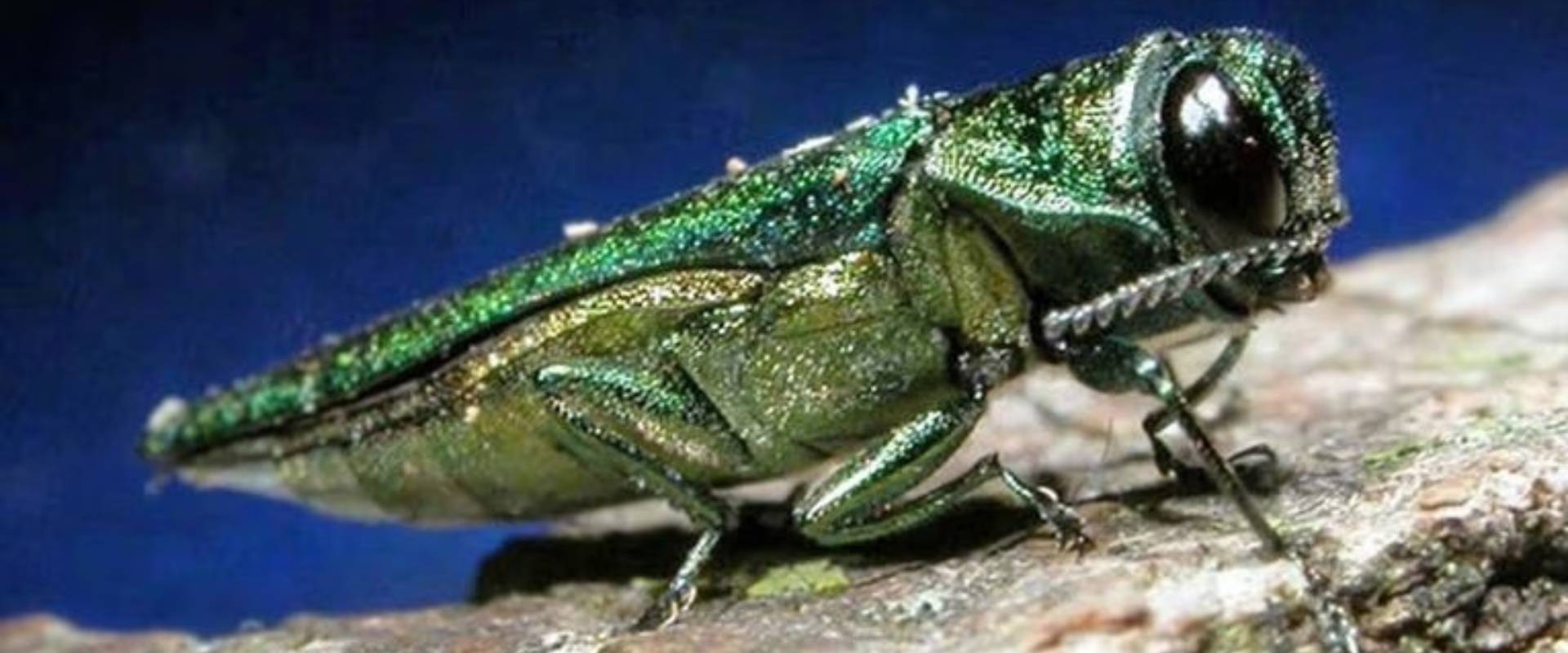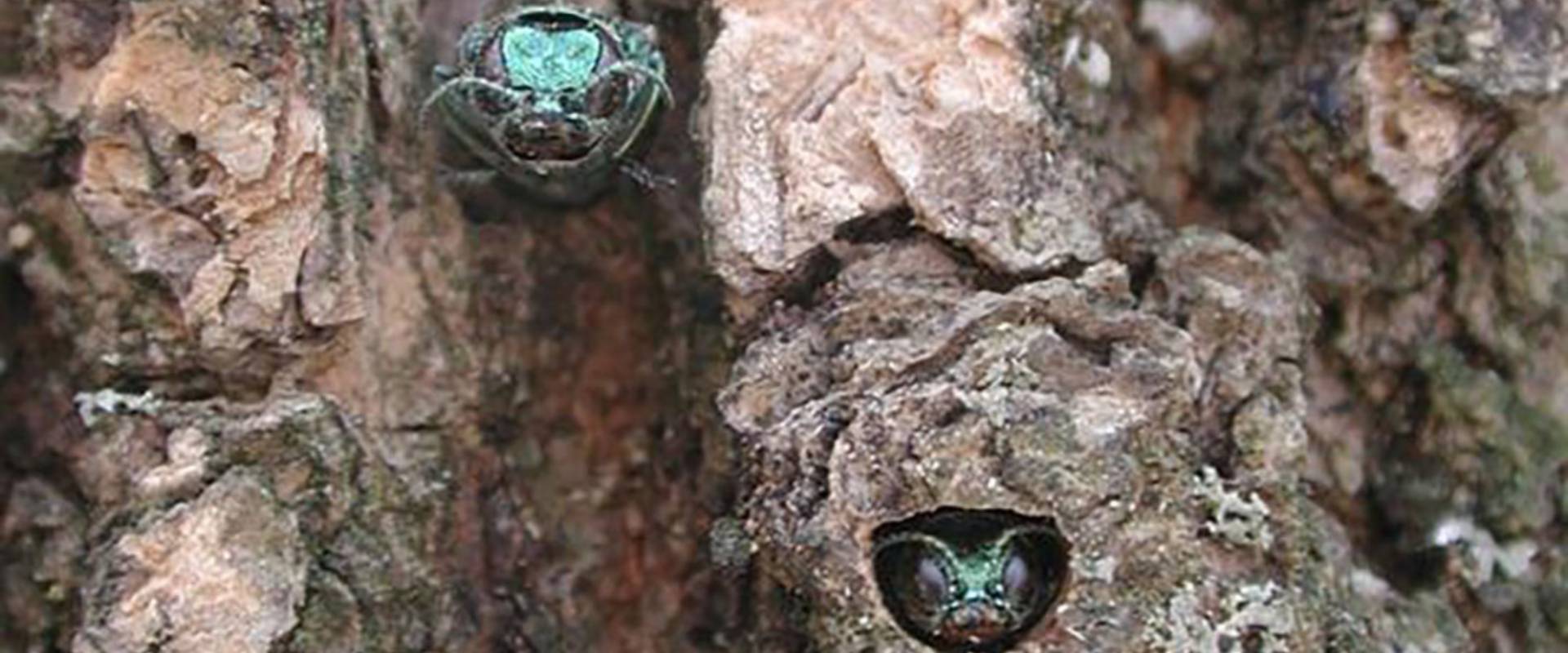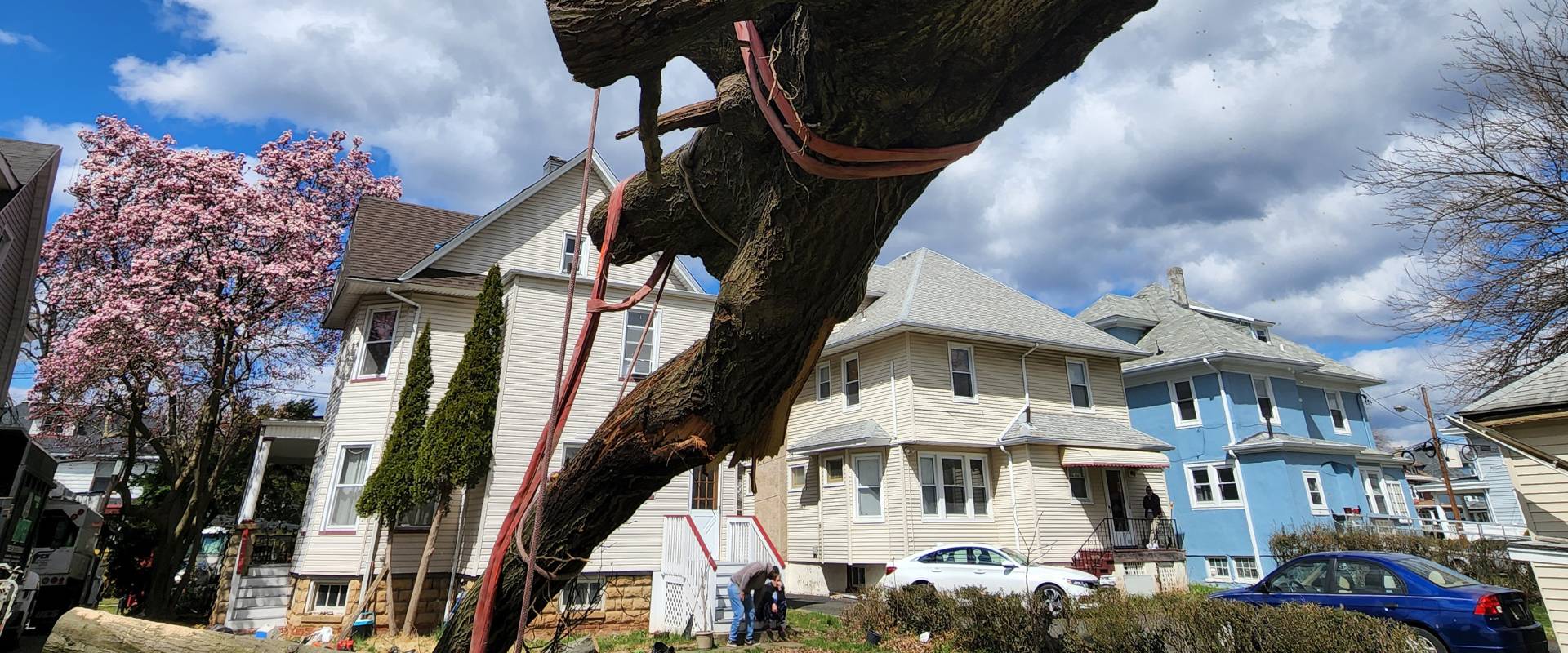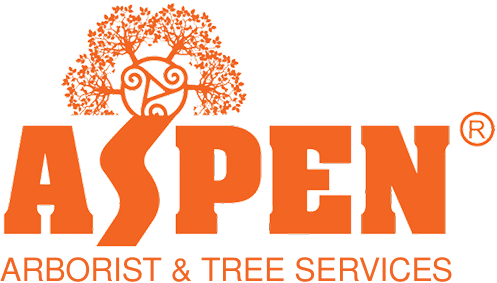Like an unwanted guest from the past, the Emerald Ash Borer is back, causing havoc in our Northern New Jersey yards.
You might be wondering, ‘Should I remove my ash tree?’ The answer is often “yes,” especially since your beloved tree could be a ticking time bomb.
This article will guide you to identify and safely remove infected trees and offer preventive measures against future infestations.
Let’s reclaim our backyard peace from this pesky invader.
Key Takeaways
- Emerald Ash Borer is an invasive beetle that poses a threat to ash trees.
- Waiting for visible signs of damage can be too late, so it is important to remove infected ash trees now.
- Infected ash trees can pose risks to property and safety.
- Removing infected trees not only saves other trees in the area but also prevents future heartache and higher removal costs.

Though some consider them a beautiful insect, these pests are killing ash trees from coast to coast.
Understanding the Threat of Emerald Ash Borer
You’ve got to understand the threat of the Emerald Ash Borer, an invasive beetle that’s causing serious harm to ash trees. This little critter, native to Eastern Asia, was first discovered in the United States in 2002, and it’s been wreaking havoc ever since. First spotted in New Jersey in 2014, It’s not the adult beetles that do the damage, though; it’s their larvae. Once they hatch, they burrow into the bark of the ash tree, feeding on the inner bark and disrupting the tree’s ability to transport water and nutrients.
Within a few years, an infested ash tree will start to show signs of decline – thinning foliage, branches dying off, and eventually, the tree itself dies. And it’s not just one or two trees we’re talking about. Entire neighborhoods, parks, and woodlands can be decimated by these little pests.
So, it’s clear that if you have an ash tree, you’re at risk. Don’t wait for visible signs of damage because by then, it could be too late. Getting rid of a dangerous ash tree now can save you a lot of heartaches later on.
Identifying Infected Trees
It’s crucial to know how to identify infected ash trees to prevent further spread of disease. First off, look for signs of woodpecker activity. These birds love the larvae of Emerald Ash Borer, so they often peck at the bark of infected trees. If you see small, D-shaped holes in the bark or if the crown of the tree appears thin and unhealthy, these are also strong indicators of infection.
Next, check for splitting bark. The larvae tunnel beneath the bark, disrupting the tree’s ability to transport water and nutrients, causing the bark to split. Further, look for larval galleries, which are S-shaped and filled with frass, a sawdust-like material.
Another sign to look for is epicormic sprouting, which are new sprouts growing from the base of the tree or on the trunk. This is the tree’s last-ditch effort to survive, and it’s a clear sign of stress.
Recognizing these signs early can help save other trees in your area. Don’t wait for the tree to pose a threat to your property or safety. Call a professional for removal as soon as you suspect your ash tree is infected.

After pupation, the adult emerald ash borer exits the ash tree leaving their telltale D-shaped holes.
Safe Removal of Infected Trees
Don’t hesitate to call in the experts for the safe disposal of any diseased trees. Once you’ve identified that your ash tree is infected and dangerous, it’s crucial that it’s removed professionally and efficiently. This isn’t a task you should undertake yourself. It can be risky, even life-threatening, to attempt to remove a large, unstable tree without the proper training and equipment.
Professional arborists have the knowledge and tools to safely and effectively remove diseased trees. They can assess the situation, plan the removal, and execute it without causing unnecessary damage to your property. They also know how to dispose of the tree in a way that prevents the disease from spreading to other trees.
You might worry about the cost of professional tree removal, but consider the potential costs of not acting. A falling ash tree can cause significant property damage and even injury. More so, leaving a diseased tree in your yard can infect other trees, leading to even more removal costs down the line. So, don’t delay. Act now to protect your property and the health of your local ecosystem.
Preventive Measures Against Future Infestations
To safeguard your trees from future infestations, there are a few preventive measures that can be implemented.
You don’t want to find yourself in a situation where you’re constantly having to remove dangerous ash trees due to infestations. It’s easier, cheaper, and more environmentally friendly to prevent the problem in the first place.
Here are some steps you can take:
- Regularly inspect your trees. Look for signs of disease or insect infestation. Early detection is crucial in preventing widespread damage.
- Maintain your trees’ health. Healthy trees are less likely to fall victim to diseases and pests.
- Use tree-safe pesticides. If you notice pests, use products that won’t harm your trees but will deter the pests.
- Ensure proper spacing between trees. Crowded trees can create a conducive environment for pests.
- Seek professional advice. If you’re unsure about something, don’t hesitate to consult an arborist.
You’ve got the power to prevent future infestations. It’s all about staying vigilant, taking care of your trees, and seeking help when you need it.
Prevention is always better than cure. So, take these steps today and keep your ash trees healthy and safe.

The emerald ash borer devastates trees and often leaves removal as the only option for homeowners.
Frequently Asked Questions
What are some alternative trees that I can plant to replace my ash tree?
You can replace your ash tree with several alternatives. Oak, maple, or pine trees are great choices. For smaller spaces, consider flowering dogwood or Japanese maple. These options are hardy and less disease-prone.
How long does it usually take for an ash tree to die once infected?
Worried your ash tree’s days are numbered? Once infected by the emerald ash borer, it typically takes two to four years for an ash tree to die. It’s a swift and unfortunate process, I’m afraid.
Are there any government programs or assistance available for ash tree removal?
Yes, several government programs offer assistance for ash tree removal. These vary by region, so it’s worth checking with your local or state government. Some programs may cover partial or full removal costs.
Can infected ash wood be used for firewood or other purposes?
Imagine the warm, crackling fire fueled by ash wood. Even if it’s infected with emerald ash borer, it’s safe to use as firewood if you take the proper precautions to prevent the pest’s spread. Use kiln-dried wood when possible since any EAB larvae are killed in the process.
What impact does the loss of ash trees have on local ecosystems and biodiversity?
The loss of ash trees disrupts local ecosystems and biodiversity. It reduces habitats for various species, alters soil nutrients, and can impact forest succession. It’s crucial to understand these impacts to protect our environment.
Worried Your Ash Trees Could Be Dangerous?
Contact Aspen Tree today at 201-939-8733. We can assess your trees for any health or safety issues and recommend the best course of action. We’re not your average tree service. From Clifton to East Orange and beyond, we’re your Northern New Jersey authority!
Proudly serving Essex, Passaic, Bergen, and Morris Counties.





